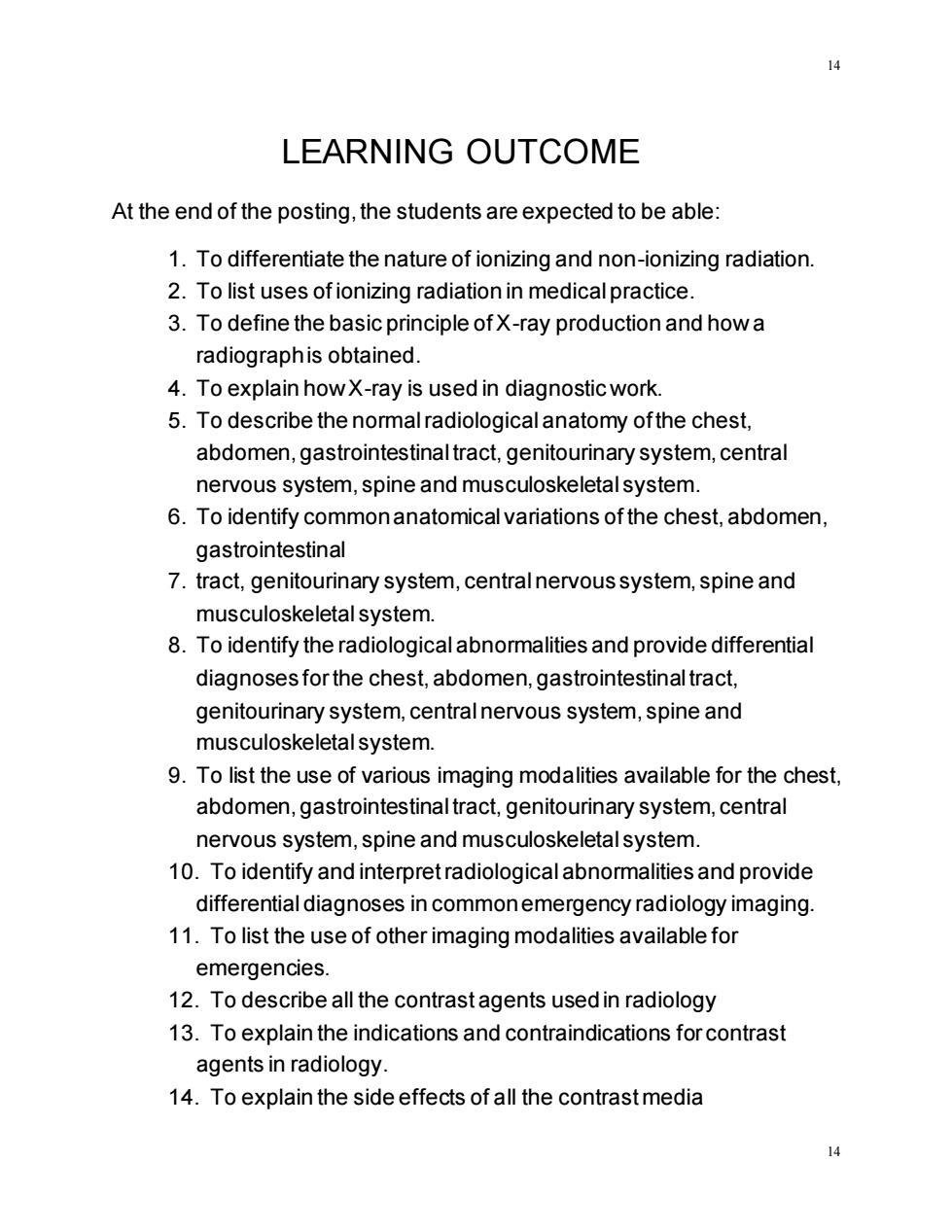正在加载图片...

LEARNING OUTCOME At the end of the posting,the students are expected to be able: 1.To differentiate the nature of ionizing and non-ionizing radiation. 2.To list uses of ionizing radiation in medical practice. 3.To define the basic principle of X-ray production and how a radiographis obtained. 4.To explain how X-ray is used in diagnostic work. 5.To describe the normalradiological anatomy ofthe chest, abdomen,gastrointestinal tract,genitourinary system,central nervous system,spine and musculoskeletal system. 6.To identify common anatomical variations of the chest,abdomen. gastrointestinal 7.tract,genitourinary system,central nervous system,spine and musculoskeletal system. 8.To identify the radiological abnormalities and provide differential diagnoses for the chest,abdomen,gastrointestinal tract, genitourinary system,central nervous system,spine and musculoskeletal system. 9.To list the use of various imaging modalities available for the chest abdomen,gastrointestinal tract,genitourinary system,central nervous system,spine and musculoskeletal system. 10.To identify and interpret radiological abnormalities and provide differential diagnoses in common emergency radiology imaging 11.To list the use of other imaging modalities available for emergencies 12.To describe all the contrast agents used in radiology 13.To explain the indications and contraindications for contrast agents in radiology. 14.To explain the side effects of all the contrast media 14 14 LEARNING OUTCOME At the end of the posting, the students are expected to be able: 1. To differentiate the nature of ionizing and non-ionizing radiation. 2. To list uses of ionizing radiation in medical practice. 3. To define the basic principle of X-ray production and how a radiograph is obtained. 4. To explain how X-ray is used in diagnostic work. 5. To describe the normal radiological anatomy of the chest, abdomen, gastrointestinal tract, genitourinary system, central nervous system, spine and musculoskeletal system. 6. To identify common anatomical variations of the chest, abdomen, gastrointestinal 7. tract, genitourinary system, central nervous system, spine and musculoskeletal system. 8. To identify the radiological abnormalities and provide differential diagnoses for the chest, abdomen, gastrointestinal tract, genitourinary system, central nervous system, spine and musculoskeletal system. 9. To list the use of various imaging modalities available for the chest, abdomen, gastrointestinal tract, genitourinary system, central nervous system, spine and musculoskeletal system. 10. To identify and interpret radiological abnormalities and provide differential diagnoses in common emergency radiology imaging. 11. To list the use of other imaging modalities available for emergencies. 12. To describe all the contrast agents used in radiology 13. To explain the indications and contraindications for contrast agents in radiology. 14. To explain the side effects of all the contrast media